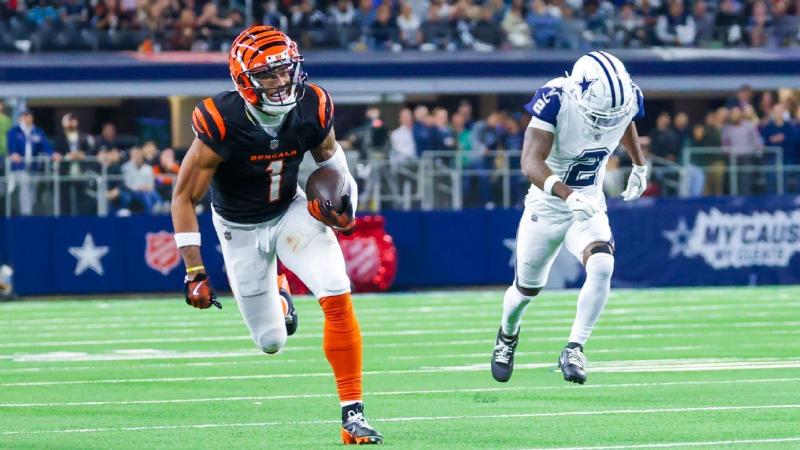Fantasy football beginner's guide to salary cap drafts 


07-15 10:04Views 5873
Ja'Marr Chase is widely recommended as the first overall pick in standard fantasy football drafts due to his exceptional and reliable production. However, managers selecting late in the first round (e.g., 9th or 10th) will miss out on elite players like Chase, Bijan Robinson, or Saquon Barkley, as they have little control over who falls to them in that draft format.
The article strongly advocates trying salary cap drafts as a more engaging alternative to standard drafts. Unlike standard drafts where managers passively watch desired players get selected by others, salary cap drafts allow managers to acquire any player they want, including top targets like Chase, Robinson, or Barkley, provided they are willing to spend the necessary budget. Each team starts with a set budget (typically $200 in fake money), nominates players in order, and then bids on them, with the highest bidder winning the player until rosters are filled. This process involves constant strategy and moves quickly.
Salary cap drafts require significant strategic planning. Superstar players command high prices, forcing managers to decide their spending limits per player or position. Strategies range from "stars-and-scrubs" (spending heavily on a few stars and filling the roster cheaply) to seeking balanced rosters. Flexibility is crucial, as bidding wars might force managers to abandon initial plans (e.g., for Lamar Jackson) and adapt, potentially securing a cheaper, productive player at one position to free up money elsewhere.
Effective budget management is key. Managers are warned against both overspending aggressively early on and being too conservative, holding onto most of their money. Overspending leaves insufficient funds for a complete roster, while underspending can result in leftover money when quality players are gone. Observing bidding patterns helps identify overpriced players and potential bargains, requiring a mix of aggressive spending on targets and patience for value opportunities.









































Related Comments(5856)